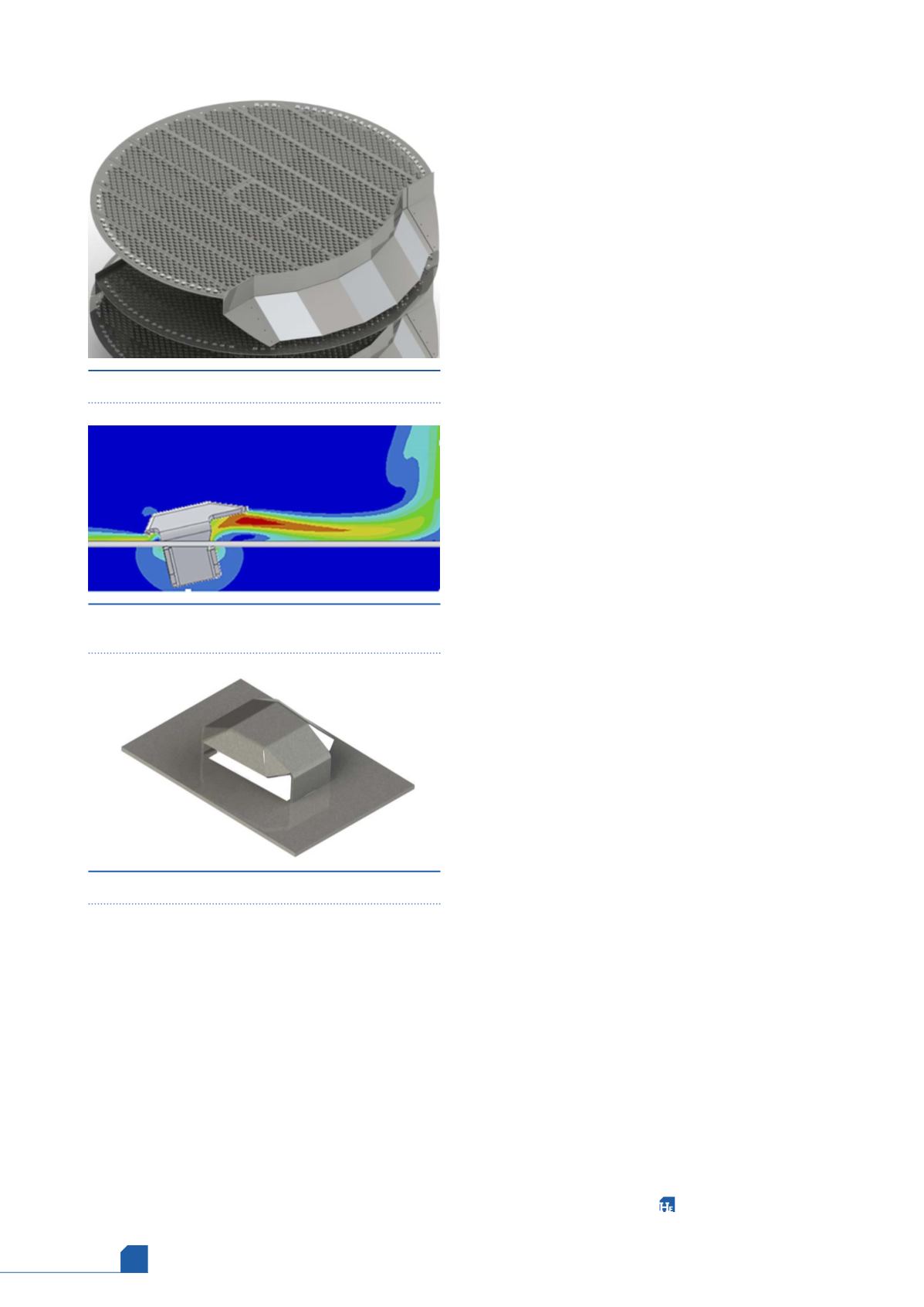
August
2019
HYDROCARBON
ENGINEERING
38
demand while offering optimal fouling resistance that
maximises equipment’s service life.
Sulzer’s UFM AF anti-fouling valves have been
specifically designed to address these issues (Figure 5). These
large fixed valves, bearing the signature umbrella shape, have
at least 10 – 15% higher capacity than conventional fixed
valves. UFM AF valves can be combined with other
anti-fouling design features such as sloped or stepped
outlet weirs and flow directing push valves, to minimise the
accumulation of particles on the tray decks.
Addressing any customer requirement
Choosing a mass transfer technology specialist that can
address general and specific separation needs and
challenges can help plant operators to fully leverage the
capabilities of their facilities and strengthen their
competitiveness.
With Sulzer, for example, process industries can benefit
from a wide portfolio of high-quality trays and associated
components that meet every requirement of modern
industrial processes. In particular, the UFM family of valve
trays ensures state-of-the-art capabilities for a broad range
of applications.
Case studies
Meeting stricter environmental regulations
A reformate splitter – which receives naphtha from the
upstream catalytic cracking reformer (CCR) and removes
benzene and lighter components in the distillate – was built
in a refinery in Texas, US, in 2009. This column had 61 trays,
which were originally equipped with fixed valves.
A few years later, a new environmental regulation from
the US Environmental Protection Agency (EPA) came into
force requiring blended gasoline to have less than 0.62%
benzene by volume. In order to meet this condition, the
reformate splitter would face a 15% increase in feedstock in
order to remove more benzene. As the column was already
operating at maximum capacity, the existing fixed valve
trays could not handle the additional feed rate.
Sulzer supported the refinery by replacing the existing
fractionation trays with UFM tray decks and sloped
downcomers. After the revamp, the column has been running
smoothly, delivering products that meet the required
specifications and achieving an optimal process efficiency.
Boosting throughput by 50%
A phenol production plant in China, built in 2004, was
planning a 50% increase in phenol production rates, shifting
from 200 to 300 tpy. In the Benzene column, separating
benzene and isopropyl benzene, the existing sieve trays
could not handle the new loads.
Sulzer conducted an extensive hydraulic evaluation and
concluded that 25 trays in the bottom section below the
feed inlet were bottlenecking the unit. In addition, it was
necessary to replace the existing straight downcomers,
whose size was inadequate for the new loads.
To address these issues, Sulzer supplied UFMPlus high
performance trays, with enhanced downcomers to
maximise the bubbling area, as well as UFM PV to further
boost the vapour handling capacity. The new trays could
minimise pressure drop and the risk of entrainment,
improving the overall column performance. As a result, the
plant succeeded in boosting its production rates.
Conclusion
When specifying new valve trays, it is beneficial for
companies in the process industry to take advantage of
expert mass transfer technology providers. The design of
trays and valves can influence productivity, efficiency,
column capacity and equipment service life. By selecting
the right provider, businesses can benefit from high-quality,
reliable, durable and flexible components. These solutions
should not only suit their intended applications, but also
offer maximum performance.
Figure 4.
CFD simulation of vapour flow when using
UFM PV valves.
Figure 3.
UFM push valve.
Figure 5.
UFM AF anti-fouling valve.








